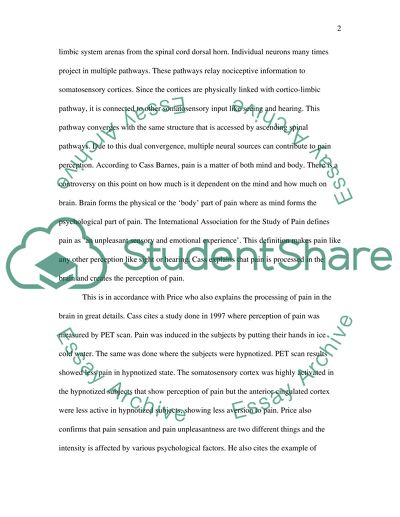Pain Perception Article Example | Topics and Well Written Essays - 750 words. Retrieved from https://studentshare.org/miscellaneous/1511600-pain-perception
Pain Perception Article Example | Topics and Well Written Essays - 750 Words. https://studentshare.org/miscellaneous/1511600-pain-perception.


